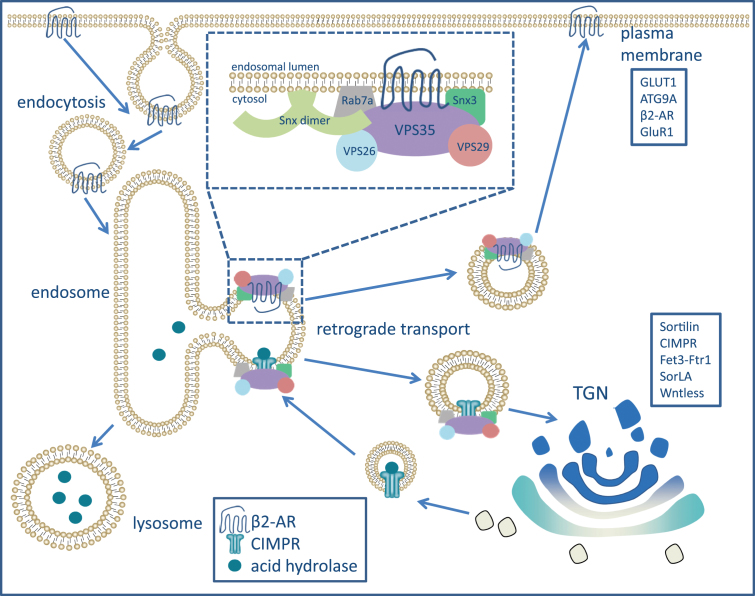Fig.1.
Retromer-regulated retrograde transport of endosomal-associated protein cargo. The retromer, along with retromer-associated proteins that assist in membrane binding (Snx3 and Rab7a), is responsible for the retrograde transport of several cargo proteins from the endosomal network to either the trans-Golgi network (TGN) or the plasma membrane. VPS35, along with VPS26 and VPS29, sit at the endosomal membrane and recognize cargo (transmembrane proteins) to be sorted. Two canonical cargo proteins that the retromer is responsible for transporting are the mannose-6-phosphate receptor (CI-MPR) and the β2-adrenergic receptor (β2-AR). These two examples demonstrate the two major routes of transport that are facilitated by the retromer [34]. CI-MPR is responsible for delivering acid hydrolases (cathepsin D, for example) to the endosome for eventual delivery to the lysosome. While other mechanisms are responsible for delivering CI-MPR with its ligand to the endosome, the retromer facilitates the retrieval of CI-MPR to the TGN to bind more ligand, which will eventually make its way to the endosome once again [85]. On the other hand, β2-AR is recycled from the endosome to the plasma membrane where it will stay until activated. Although the retromer is not responsible for the initial endocytosis of β2-AR at the plasma membrane, its role in recycling the receptor back to the plasma membrane prevents it from lysosomal degradation [48].

